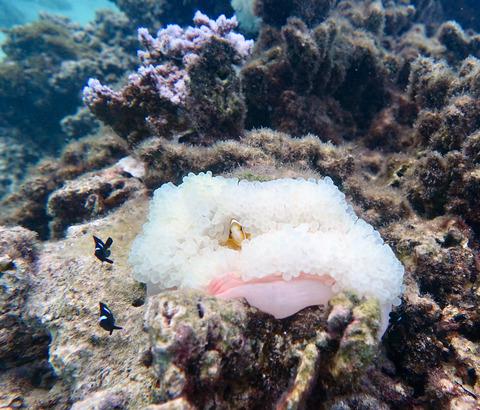当前位置:
X-MOL 学术
›
Funct. Ecol.
›
论文详情
Our official English website, www.x-mol.net, welcomes your
feedback! (Note: you will need to create a separate account there.)
Physiological and behavioural effects of anemone bleaching on symbiont anemonefish in the wild
Functional Ecology ( IF 4.6 ) Pub Date : 2021-01-11 , DOI: 10.1111/1365-2435.13729 Daphne Cortese 1 , Tommy Norin 2, 3 , Ricardo Beldade 1, 4 , Amélie Crespel 2 , Shaun S. Killen 2 , Suzanne C. Mills 1, 5
中文翻译:

海葵漂白对野生共生海葵鱼的生理和行为影响
更新日期:2021-03-08
Functional Ecology ( IF 4.6 ) Pub Date : 2021-01-11 , DOI: 10.1111/1365-2435.13729 Daphne Cortese 1 , Tommy Norin 2, 3 , Ricardo Beldade 1, 4 , Amélie Crespel 2 , Shaun S. Killen 2 , Suzanne C. Mills 1, 5
Affiliation

|
- Climate change causes extreme heat waves that have induced worldwide mass coral bleaching. The impacts of temperature‐induced bleaching events on the loss of algal endosymbionts in both corals and anemones are well documented. However, the cascading impacts of bleaching on animals that live in association with corals and anemones are understudied.
- We performed a field‐based experiment to investigate how host anemone bleaching affected the metabolic rate, growth, behaviour and survival of wild juvenile orange‐fin anemonefish Amphiprion chrysopterus over 1, 2 and (for survival) 9 months.
- We found that the standard metabolic rate of anemonefish residing in bleached anemones decreased over time but was unaffected in fish from healthy anemones. Despite the reduced metabolic cost, the growth rate of fish from bleached anemones was significantly lower compared to fish from healthy anemones, suggesting that animals residing in bleached hosts are at an energetic disadvantage. This was corroborated by our finding that fish from bleached anemones spent more time out of their anemones, suggestive of a greater need to forage in the water column. However, fish from bleached anemones were overall less active and used less space around the anemone, resulting in a negative correlation between space use and survival after 4 weeks.
- Our results provide insight into the physiological and behavioural effects of host bleaching on juvenile fish in the wild, and highlight how relatively short‐term thermal anomalies can have long‐lasting impacts beyond the bleached anemones or corals themselves.
中文翻译:

海葵漂白对野生共生海葵鱼的生理和行为影响
- 气候变化导致极端的热浪,导致全球范围内大规模的珊瑚白化。充分记录了温度引起的漂白事件对珊瑚和海葵中藻类内共生菌损失的影响。但是,漂白对与珊瑚和海葵伴生的动物的连锁反应的影响尚未得到充分研究。
- 我们进行了一项基于野外的实验,研究了宿主海葵漂白如何在1、2和(以及存活)9个月内影响野生少年橙翅海葵Amphiprion chrysopterus的代谢率,生长,行为和存活。
- 我们发现,驻留在漂白海葵中的海葵的标准代谢率随时间降低,但在健康海葵的鱼类中不受影响。尽管降低了新陈代谢的成本,但与健康海葵相比,漂白海葵的鱼的生长速度明显较低,这表明居住在漂白宿主中的动物处于精力旺盛的劣势。我们的发现证实了这一点,从漂白的海葵中提取的鱼花在海葵上的时间更多,这表明在水柱中觅食的需求更大。但是,漂白海葵的鱼总体上不活跃,在海葵周围占用的空间更少,导致空间使用与4周后的生存呈负相关。
- 我们的结果提供了对宿主漂白对野生幼鱼的生理和行为影响的见解,并突出了相对短期的热异常如何对漂白的海葵或珊瑚本身产生长期影响。









































 京公网安备 11010802027423号
京公网安备 11010802027423号